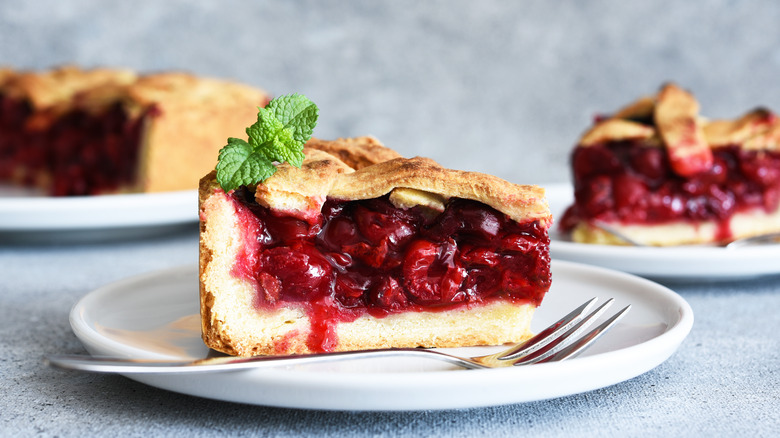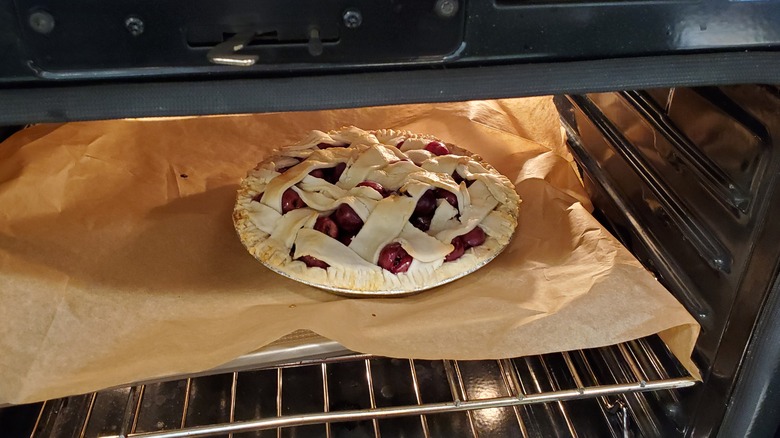The Easy Tip To Make Sure Your Pastry Will End Up With A Crisp Bottom
If there is one thing that all bakers want to avoid every time they make a pie, it is a moist, soggy bottom. A soggy-bottomed pastry is not only a nightmare texturally, but it is a structural and flavor nightmare too. Who wants a limp, saturated bottom on their pie? No one, that's who. You want the crust bottom to hold whatever you have loaded into it without it falling apart. While there are a number of different ways to achieve this, there is one easy trick you can pull that will all but ensure that your pastry crust will end up with a crisp bottom.
You may already have your own method for getting the perfect crispy bottom, but we nevertheless recommend you pay attention to this one in particular. For this tip, you don't need to blind-bake, weigh down your pastry crust, or poke holes in the bottom to keep it from rising. This method only involves heating a heavy-bottomed tray in the oven and placing your already loaded pastry directly onto the hot pan before proceeding to bake as normal.
The heat generated by the pan should be more than enough to cook your pie crust before it even has the chance to get soggy. Sound appealing? Good, because this method takes out a lot of the prep, stress, and guesswork around how to achieve that beautifully crispy bottom crust.
How to use the oven to your advantage
Your oven needs to be hot in order for this to work. 425 degrees Fahrenheit is the optimal setting for cooking pastry. Let this heat work to your advantage. Place your heavy-bottomed baking sheet in the oven as it preheats. The metal will heat alongside the oven, providing you hot base on which to place your pie.
Baking the pie on a tray that is already hot allows the bottom crust to cook a little faster than the rest of the pie. Since it is immediately set upon the heat, the butter and water inside of the pastry melt, creating steam and developing those sought-after flaky layers. This in turn allows the crust to cook fast and set quickly, and therefore not take on the fillings liquids, which would have made the crust soggy if it weren't yet set.
You could use a pizza stone to achieve the same result, but a tray is easiest since that is one thing that is bound to be in your kitchen, especially if you have a proclivity for baking. Just make sure that it is a metal tray you are using. Glass or ceramic dishes do not contact with heat nearly as well and could bring about the opposite of what you are looking for. Sticking with the metal tray is bound to get you that desired crispy bottom crust that will make your pie a resounding success.

